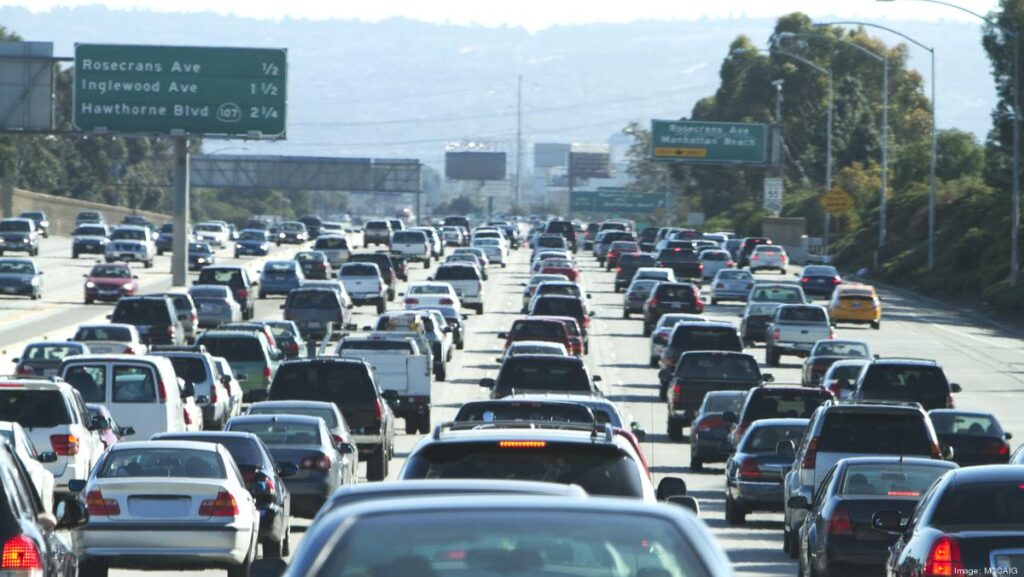
Some of my defensive driving rules focus on preventing trouble in specific danger spots. Especially in tight, congested areas where it is difficult to maneuver, drivers sometimes get impatient. In situations like trying to get into traffic from a parking lot or making a left turn across heavy traffic, drivers often take advantage of any opening to “get moving.” We think, with certain justification, that if we don’t seize “opportunities” to “fill a hole” or take advantage of a gap in traffic, we will languish away into old age, still waiting beside the street! Especially in congested areas, we tend to think that it doesn’t pay to be too timid. This leads to traffic conflicts and increased potential for collisions.
You’ve learned by experience to watch for gaps in traffic — because you KNOW that someone is very likely to barge through them and suddenly materialize in front of your vehicle. I was driving my MG-B down a busy boulevard in Phoenix years ago, approaching an intersection where I needed to make a right turn. I was decelerating in the right lane. Both lanes to the left of me were backed up with stopped vehicles all the way to the intersection (perhaps 1 or 2 city blocks). I was carrying on a conversation with my daughter, who was in the passenger seat beside me.
A vehicle coming from the opposite direction stopped in the center left turn lane, and the traffic in the two lanes immediately to my left created room for him to make the left turn in front of them, and therefore also in front of me. But I was talking to my daughter, instead of seeing the impending danger! When the left-turning vehicle “suddenly” appeared in front of me, there was no room to stop and no place to go. I was as much a surprise to him as he was to me. The resulting collision wiped out my MG right back to the windshield. The person making the left turn was cited (and properly so) for failing to yield while making a blind left turn.
The judge dismissed that citation, stating that “sometimes these things are simply accidents.” Nothing could have been further from the truth. It wasn’t an “accident;” it was entirely predictable. The driver making the left turn erred in making a left turn without being able to see ALL oncoming lanes and a height-challenged sports car that was approaching in the lane he couldn’t see. And the driver of that MG-B also could have prevented the crash — by paying attention and recognizing the extremely likely chance that someone would USE a gap in congested traffic to make a left turn. This was a situation where my daughter and I could easily have been seriously injured, but we were lucky that day — and we were wearing seat belts. The lesson I learned was to be wary of gaps in the traffic — “traffic holes” — and approach them with caution. Since that day, I have witnessed at least two additional collisions that occurred in precisely the same way, one of them involving a pedestrian. So watch out for “traffic holes!”
Defensive Driving Tips for Congested Areas
- Stay Alert and Focused:
- Always be aware of your surroundings, especially in congested areas. Distractions, such as conversations, can lead to missing critical cues about potential hazards.
- Anticipate Gaps in Traffic:
- Recognize that other drivers may use gaps in traffic to make sudden moves, such as left turns. Approach these gaps with caution, anticipating that someone might “fill the hole.”
- Avoid Blind Left Turns:
- Never make a left turn unless you can see all the lanes of oncoming traffic clearly. This includes being aware of low-profile vehicles like sports cars that might be in a lane obscured by other cars.
- Leave Space:
- When stopping in congested traffic, leave enough space between you and the car in front of you. This buffer can provide an escape route if needed.
- Slow Down:
- Reduce your speed when approaching intersections or congested areas where sudden stops or turns are likely.
- Use Defensive Positioning:
- Position your vehicle in a way that maximizes your visibility and gives you the best chance to react to sudden movements by other drivers.
- Communicate Intentions:
- Use your turn signals and ensure that your actions are predictable to other drivers. This helps in preventing misunderstandings and sudden maneuvers that can lead to collisions.
Conclusion
In congested areas, patience and vigilance are key. Recognize the potential dangers of “traffic holes” and approach them cautiously. By staying alert, anticipating the actions of other drivers, and maintaining a defensive driving posture, you can significantly reduce the risk of collisions. Keep these principles in mind, and always strive to keep the shiny side up!
